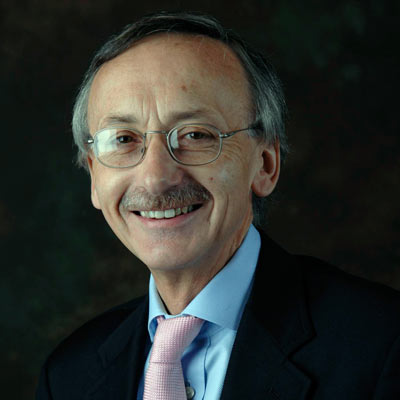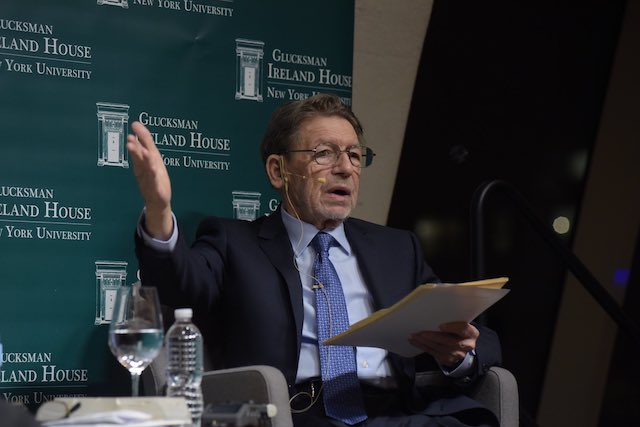By Ted Smyth
Three years ago, I read Pete Hamill’s essay, “Notes for the New Irish: A Guide for the Goyim,” in New York magazine’s special Irish Edition in March 1972. What a revelation that turned out to be. Lurking behind the cover of a vivid, burning green Irish harp, between ads for Benson and Hedges and Sony stereos, Pete wrote one of the best descriptions ever of the changing nature of Irish identity in America. Jack Deacy, then a 27-year-old hell-raiser fresh back from Belfast, had successfully convinced editor Clay Felker that if the Chinese could have a special edition, so could the Irish. Gail Sheehy wrote a vivid account of the “Fighting Women of Ireland” from Belfast, Dennis Duggan profiled Judge Comerford, and Joe Flaherty rightly observed that ’The Irish mess’ is not due to some genetic defect in the Irish character. It is, to be accurate, a British mess.” (My thanks to Professor Marion Casey at Glucksman Ireland House NYU for suggesting I read the special edition.)
In his article, Pete concluded that the conflict in Northern Ireland and the Bloody Sunday killings by British paratroops of 13 unarmed civil rights marchers in Derry a few weeks earlier in January 1972, had been a watershed moment for Irish America: “Something exhilarating has happened to the Irish this past year, the reforging of a lost cultural identity. Suddenly, younger Americans became interested in their Irish identity, the formation of “the New Irish who had moved on. They were largely people of the Left because they had read Irish history and been formed by Jewish thought. They came out of the Army and went into Vietnam Veterans Against the War instead of the American Legion.” Tom Hayden, in his book, Irish on the Inside: In Search of the Soul of Irish America, echoed this in writing that he first realized he was “Irish on the inside” when he heard civil rights marchers in Northern Ireland singing “we shall overcome.”
But everyone should read Pete’s New York magazine article in its entirety for the sheer bloody exuberance of Pete’s prose, his close observation, original mind, sense of history and community and his compassion for working people. Leading off from an Irish gathering in the McFadden Brothers Post of the American Legion, Pete reflected on the glory that had been lost: “Once the Irish ran New York; they were the bone and muscle of political power in every borough…But slowly, almost imperceptibly, their world had changed; sons came home from the Army, married their old girlfriends and rushed to the suburbs: continuity was broken, the old lines of familial authority and neighborhood loyalty were frayed and then seemed to vanish; the Church dried up in the dusty hands of Pacelli, had one rush of movement under Roncalli, and then seemed to die again, leaving some sense of ritual lost, some magical sense of wonder evaporated.”

What a gripping description of the Catholic Church losing its hold on the Irish in the mid-twentieth century! And then this, on the ambitions of the Irish before they became leaders in every sector of today’s America: “An entire generation of young Irish Americans went through Brooklyn Prep, Regis, Xavier, Cardinal Hayes and other high schools convinced that their highest ambition in life would be to join the priesthood or its lay affiliates, the FBI, the CIA and IBM.”
Pete rightly gave credit to the Kennedys, the Berrigan brothers, Irish nuns and Paul O’Dwyer for standing up for racial equality and civil rights for Black Americans in the 1960s: “It was Paul O’Dwyer who kept the capacity of political faith alive during those years… he kept alive notions of political justice and idealism that had always marked the best Irish in Ireland.” We are fortunate that Paul’s son, Brian O’Dwyer, has carried on the family tradition, campaigning relentlessly for racial equality and comprehensive immigration reform.
Pete Hamill was one of the few who could be as eloquent in speech as he was inspiring in his prose; we will miss him terribly, but we are so grateful that his words live on to inspire and enrich future generations. Thank goodness two years ago, Loretta Brennan Glucksman, the founder of Glucksman Ireland House, proposed we celebrate our fellow Board Member, the indomitable Pete; it was a magical evening as we relished the eloquence, humor and originality of that lovely man who is now gone.
Loretta speaks for all of us when she says, “Pete Hamill, my hero, was not only a gifted writer, but one of the best human beings ever. A valued Board Member of Glucksman Ireland House, NYU, Pete was always so generous to young scholars, writers and journalists, inspiring them to leave the world a better place than what they found it, as he surely did. Pete and Fukiko were among my closest friends and I will miss him dearly.”
Return to the Pete Hamill tribute page.
 A leader in strategic communications, brand management and government affairs, Ted Smyth has been a senior executive at two Fortune 200 companies and an Irish diplomat. He now serves as president of the board of Glucksman Ireland House NYU and Marlboro College and is Chair of the Clinton Institute in University College Dublin.
A leader in strategic communications, brand management and government affairs, Ted Smyth has been a senior executive at two Fortune 200 companies and an Irish diplomat. He now serves as president of the board of Glucksman Ireland House NYU and Marlboro College and is Chair of the Clinton Institute in University College Dublin.


Leave a Reply